Tokina AT-X PRO FX SD 16-28 mm f/2.8 (IF)
4. Image resolution
Let’s check how the tested lens compares with those – its results in the frame centre at 16, 22 and 28 mm presents the graph below.
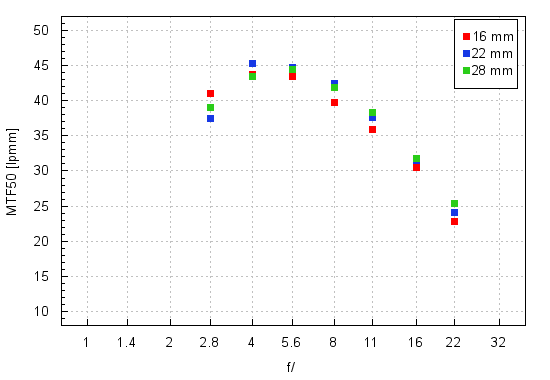
Please Support UsIf you enjoy our reviews and articles, and you want us to continue our work please, support our website by donating through PayPal. The funds are going to be used for paying our editorial team, renting servers, and equipping our testing studio; only that way we will be able to continue providing you interesting content for free. |
- - - - - - - - - - - - - - - - - - - - - - - - - - - - - - - - - - - - - - - - - - - - - - - -
You see at once the performance is splendid. Firstly, there are no significant differences between particular focal lengths. Secondly, by f/4.0-f/5.6 apertures the lens reaches very high results of 43-45 lpmm. Thirdly, even at the maximum relative aperture the resolution is very good, keeping near 40 lpmm.
How does the Tokina compare with the rivals? Its results are practically identical with those showed by the newer Tamron 15-30 mm. The Canon 16-35 mm f/2.8L II had a very similar performance but at the maximum relative aperture the Tokina seems to be a bit better and more even – a round of applause!
Now let’s check the graph below with the results on the edge of the APS-C/DX sensor.
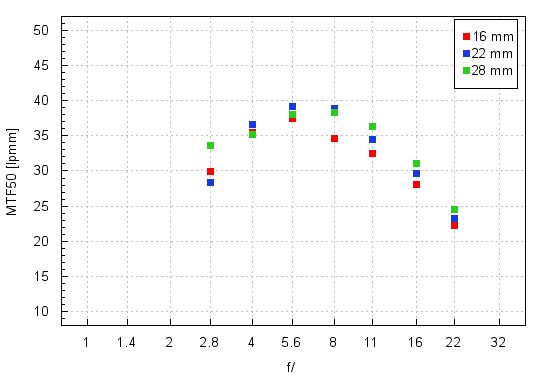
Once again it is clear there are no big differences between particular focal lengths. What’s more, even at the maximum relative aperture the image is useful or very close to useful. On stopping down the aperture by 1-2 EV the resolution reaches almost 40 lpmm which is worth mentioning because neither the Tamron 15-30 mm nor the Canon 16-35 mm f/2.8L II didn’t manage to perform such a feat. Overall the Canon is the weakest in this group, losing hands down; it had to be closed down to near f/5.6 just to make images useful. The narrower focal range of the Tokina was an asset and its constructors used it most efficiently.
Let’s check the performance at the very demanding edge of full frame – the appropriate graph you can find below.
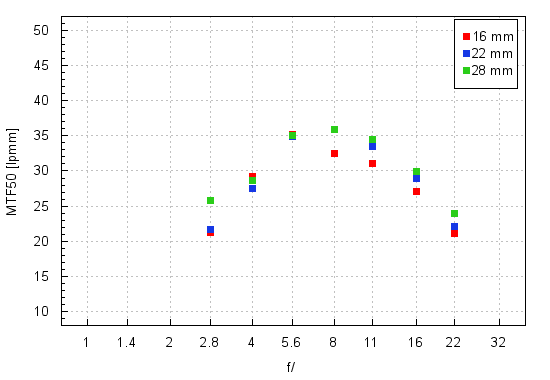
Here you have first reasons to complain. The performance near the maximum relative aperture is a problem. The lens has to be closed down to about f/4.5 in order to make the image on the edge of the frame fully useful. The Tokina loses here the duel with the Tamron which, by f/2.8 and f/4.0, performed better at all focal lengths.
To sum up the duel between the Tamron and the tested lens ended with a draw. Both instruments are equally sharp in the frame centre; the Tokina fares better on the edge of the APS-C/DX sensor but the Tamron prevails on the edge of full frame. Mind you, both these lenses, produced by independent manufacturers, perform much better than the Canon EF 16–35 mm f/2.8L II USM, a device much more expensive than them.
At the end of this chapter traditionally we present crops taken from photos of our resolution testing chart saved as JPEG files.
| Canon 5D MkIII, JPEG, 22 mm, f/2.8 |
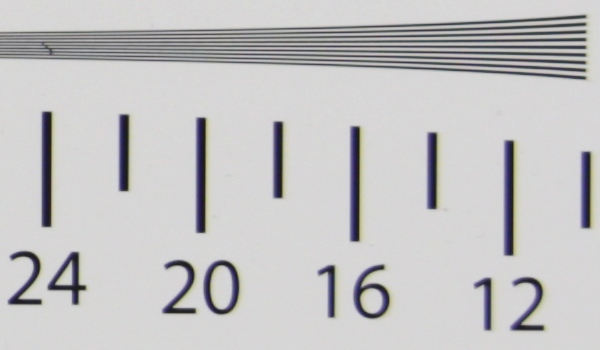 |
| Canon 5D MkIII, JPEG, 22 mm, f/4.0 |
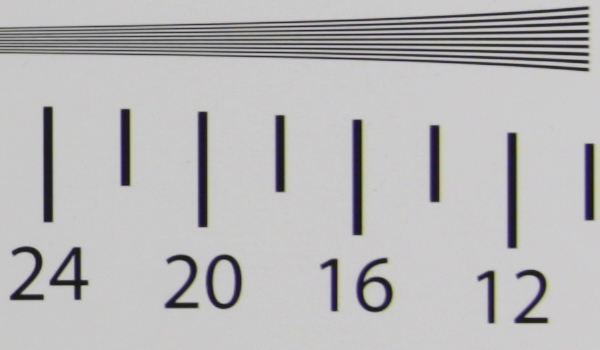 |






